The windmills of Mykonos are one of the most iconic features of this beautiful island in the Aegean Sea. You can spot the windmills from almost anywhere in the village of Mykonos.
And it’s one of the first things you see when you arrive in the island harbor. They look gorgeous, painted all white against the blue sky.
In Mykonos in the summer of 2021, we explored the Aegean Sea island while onboard Running on Waves. When we reached Mykonos, we had a small list of places to visit, and the windmills of Mykonos were high on that list.
Mainly because we have seen them online and they looked gorgeous and, secondly, because we visited windmills in Berlin before. This is something that we do whenever we travel somewhere.
If you ask yourself why there are windmills on Mykonos, we will explain everything we learned about them.

Why are there windmills on Mykonos?
Windmills were spread throughout the Cycladic islands due to a wind that blows north, known in the area as Meltemi. This wind was used to produce flour from wheat and barley, used in Mykonos and transported by ships to other regions in Greece and abroad. We became familiar with this wind once our ship reached Mykonos, and everything started to shake around us.
These windmills of Mykonos are a beautiful symbol of the island’s past and represent how local people used natural forces to their advantage. The windmills were really important to the island, reaching almost 30 before the end of the 19th century. Ten of those windmills were located in the area seen when you first arrive in Mykonos, Kato Mili, and the rest were spread all around the island.
These windmills were crucial to the surrounding islands because Mykonos was the primary provider of rusks, a dried-out bread called paximadi in Greek. They could be preserved for months and were a staple food for sailors.
With the development of electricity and the spread around the Cyclades, traditional flour production started fading, and it ceased functioning at the end of the 19th century. This is a pity since keeping the windmills going would be more sustainable than changing the process with electricity.
Nowadays, there are around 16 windmills still standing in Mykonos. Most of them were renovated; some became houses, and others became small museums. But all of these windmills of Mykonos are a monument to the island’s local heritage and the past.
If you are looking for a yacht-style experience in a small ship with excellent food and service, we think we have the thing for you. Go check our article about the Aegean Cruise on Running on Waves.
When you book your cruise, use the code fotostrassecruiseonwaves for a 5% discount on top of their regular advanced booking discount.
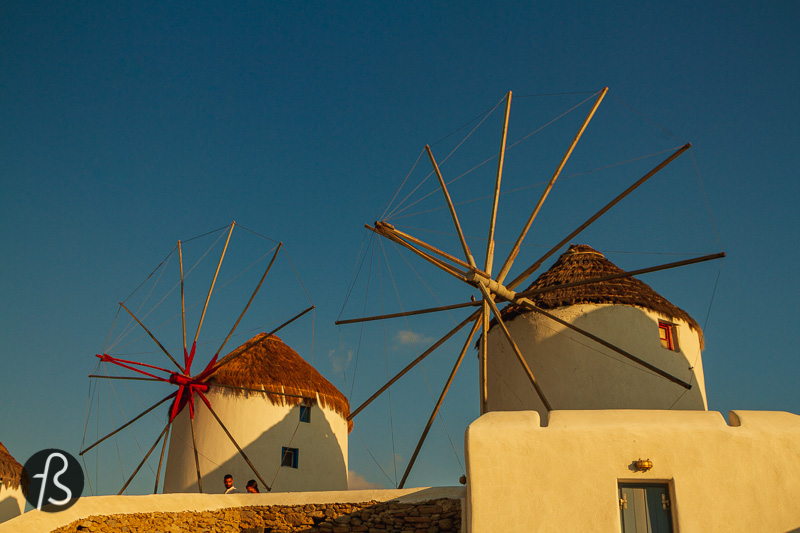
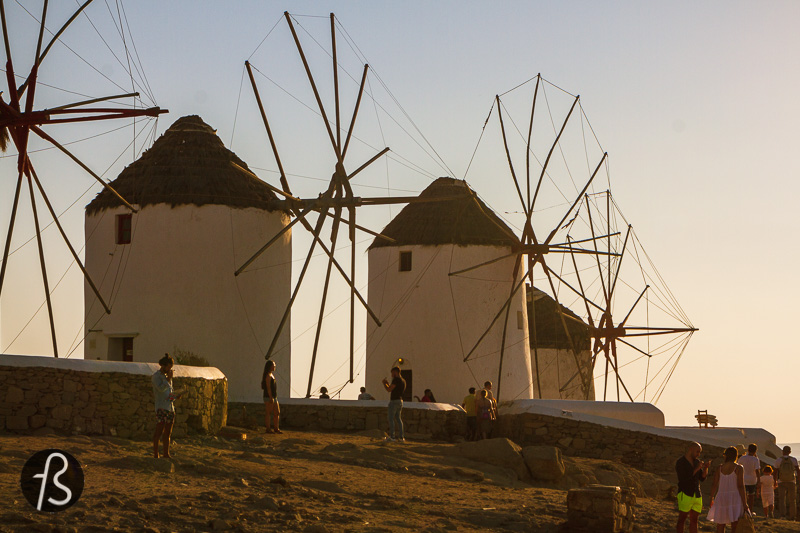
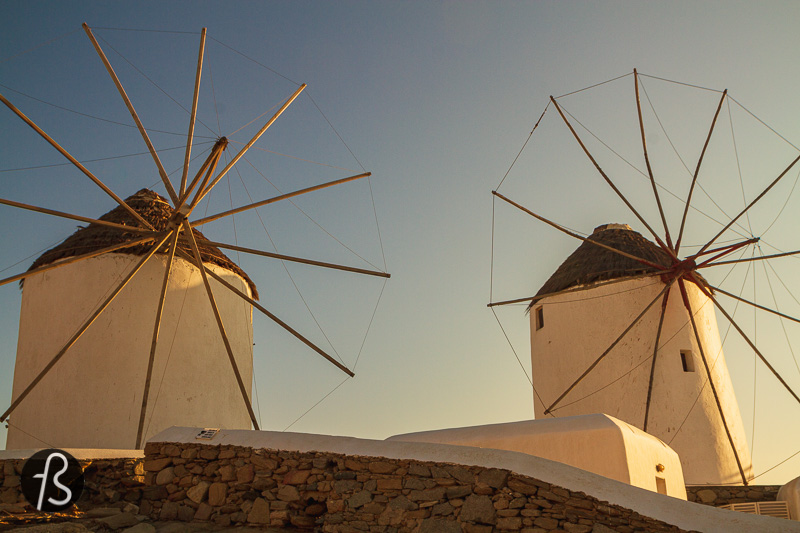
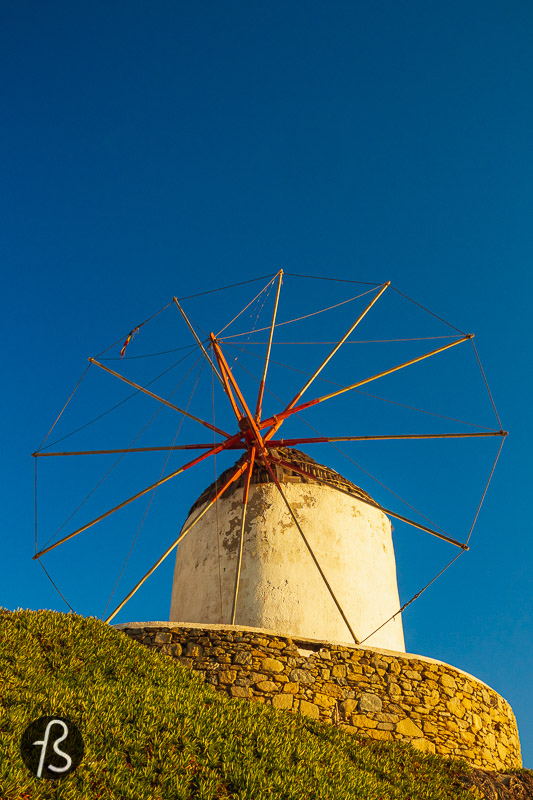
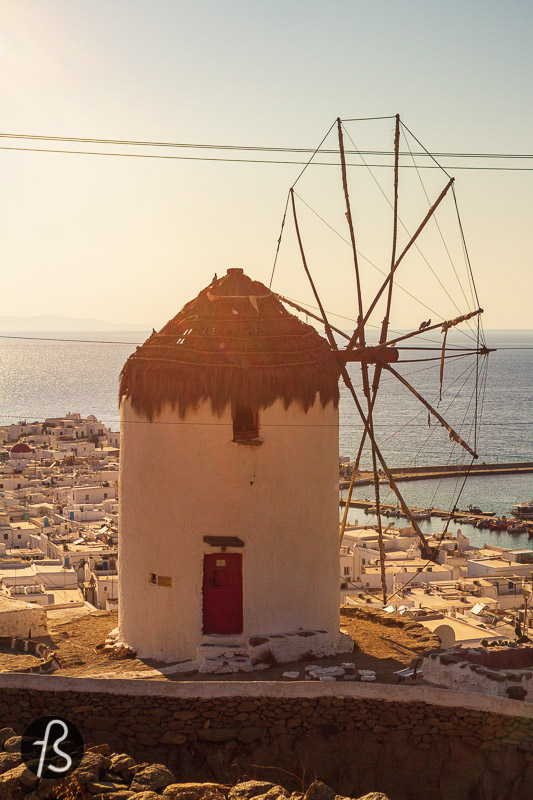
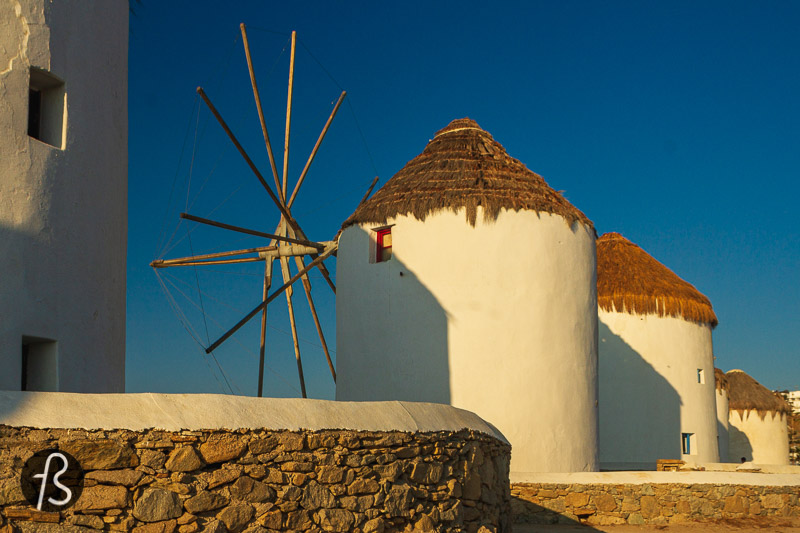
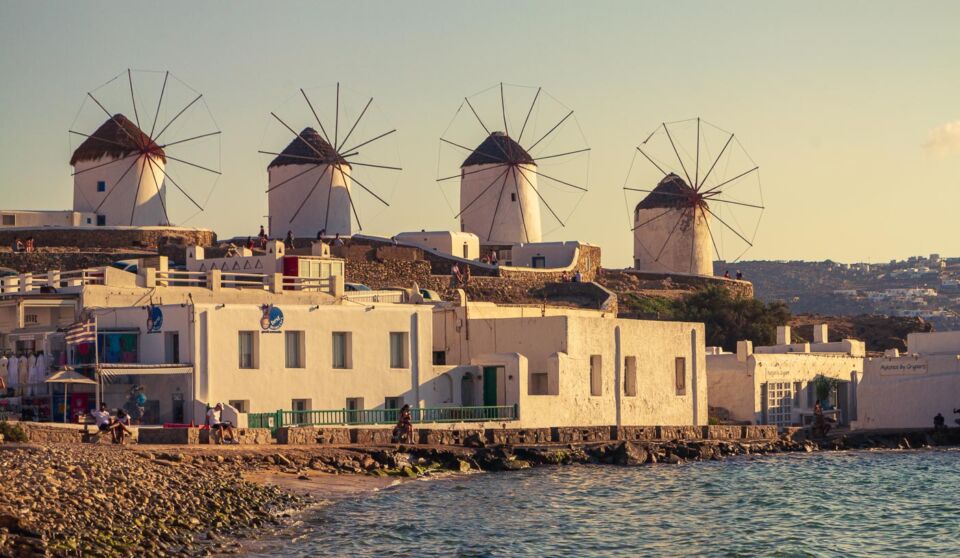
How were the Windmills of Mykonos built?
The traditional way of building the windmills of Mykonos is simple. They were all spherical shaped, made of stones sourced locally and a pointed roof at the top made of wood. Today, they are all painted white which blends quite well with the other buildings spread around the island and looks gorgeous in contrast to the blue from the Aegean sea.
The windmill themselves are not visible today since none of the windmills works anymore. But, according to our research, they were made of a triangle-shaped piece of cloth made of a heavy piece of cotton fabric. This was the same material used in the ship’s sails, and those moved with the wind and turned grind stones into action to produce flour.
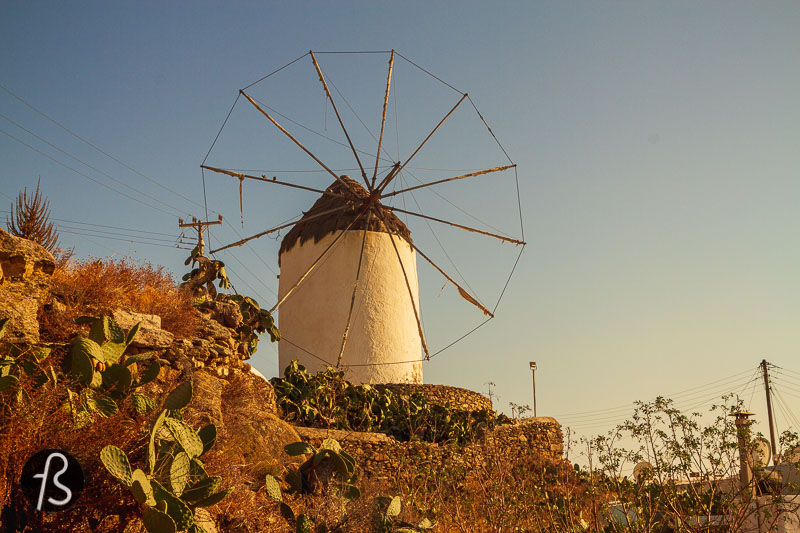



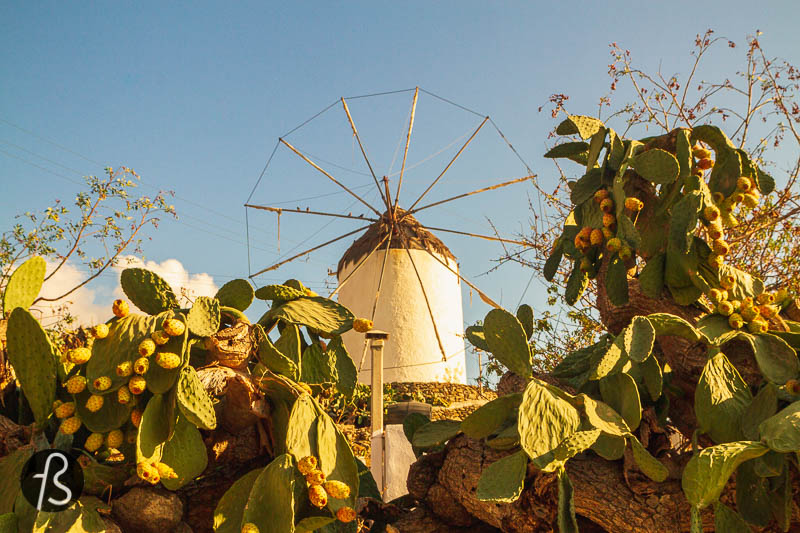

Where are windmills located?
There are 16 windmills still standing in Mykonos, and seven of them can be found in the area called Kato Mili, southeast of Chora, next to the sea. They stand in a row and are a landmark of the island and a hot spot for pictures, with dozens trying to take the best shots while there.
While we walked around Mykonos, we looked for one of the windmills that stood above the Chora and had a great view of the island. This one is called Bonis Mill and is part of the Mykonos’ Agricultural Museum, and it has been preserved to the condition that it was when it was still used, except for the triangle-shaped pieces of cloth that made the windmill move with the wind.
When you visit the Bonis Mill, you have access to see the entire process of making flour. From grinding the grains to gathering the flour and storing it safely. From July to September, starting at 16:00 until 20:00, the museum and mill are open to the public.
If the museum is closed, you can take pictures overlooking the island harbour, which can be good enough for most people.
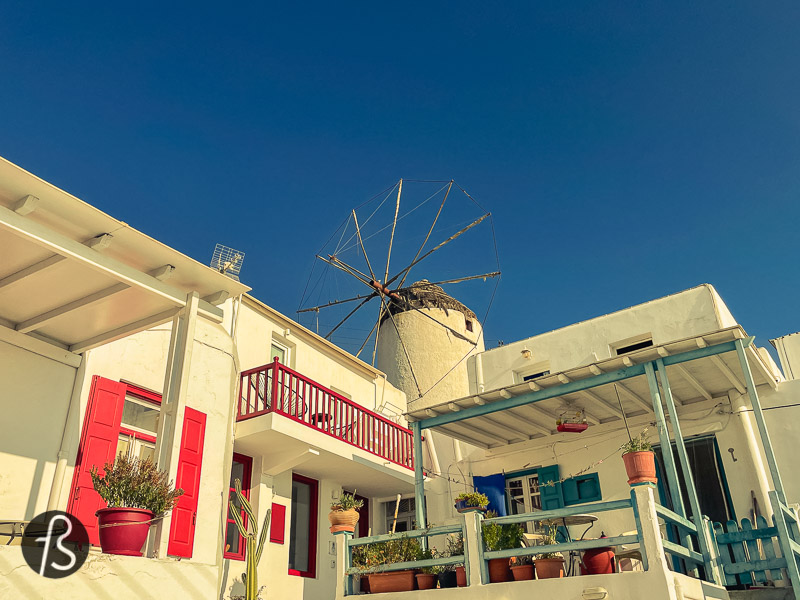
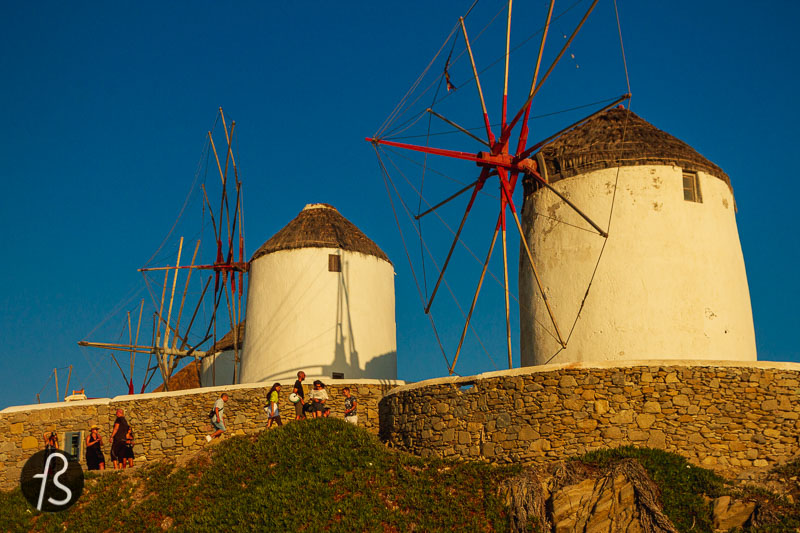
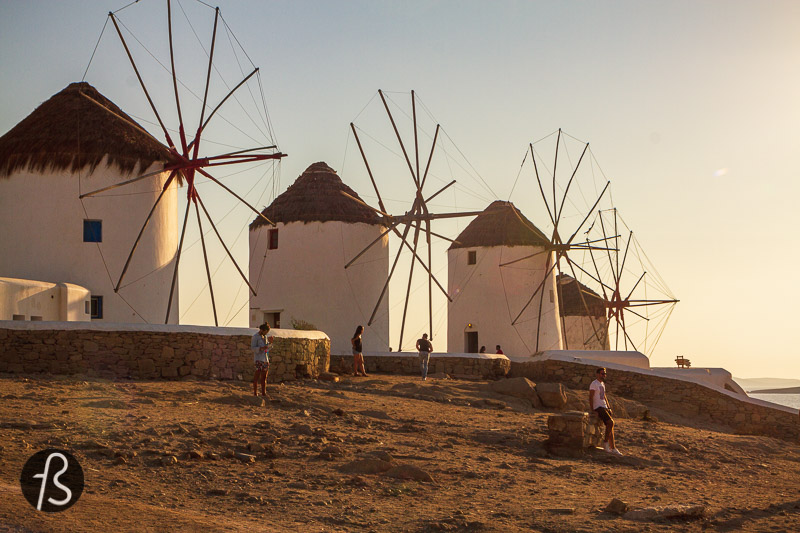
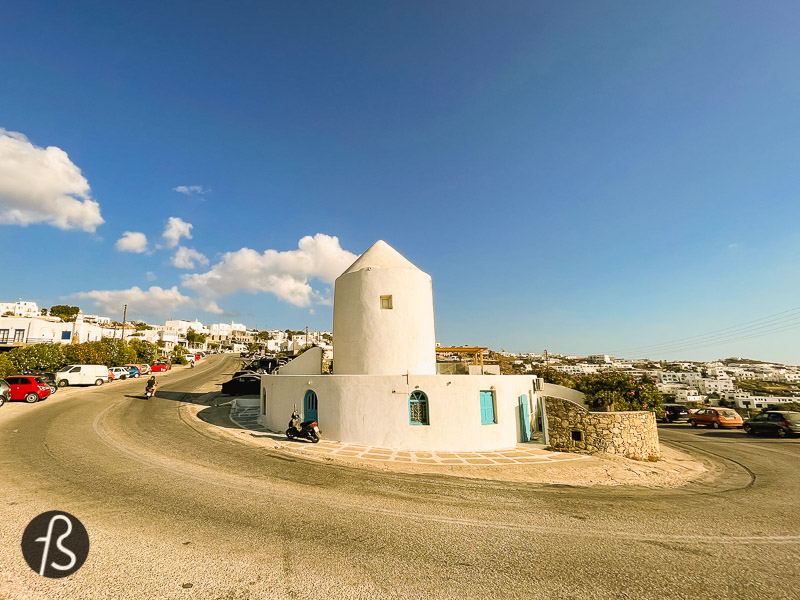
While in Mykonos, going on a windmill hunt and finding them around the island was great. They are beautiful landmarks of times passed by. They are some of the most memorable pieces of architecture that you can photograph on the island. Whenever you are in Mykonos, don’t forget to look for windmills.
A Visit to the Flour Windmills of Mykonos
Μύκονος 846 00, Greece